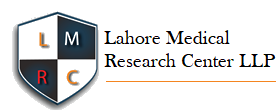ABO Blood Group System and RH Factor
DOI:
https://doi.org/10.54393/mjz.v2i1.34Keywords:
Blood groups, RH factor, blood donationAbstract
There are many systems which are used to classify blood group types in man, the most common types are MN, ABO and Rh blood group systems. Among the above mentioned types, ABO blood group system is most common which is used to classify blood group types. Austrian immunologist, Karl Landsteiner was the first person to give and describe the system in 1900 [1]. This system explains four types of blood groups which include A, B, AB and O [2]. These blood groups are made on the basis of presence or absence of special proteins found on erythrocytes (red blood cells) which are known as antigens. These antigens are A and B. Antigen production in the body starts before birth of a person and remains throughout life. Antigen production is under control of two genes IA and IB. People whose blood group is A have antigen A in their red blood cells. Persons which have blood group B have antigen B in their red blood cells. AB blood group has both the antigens A and B at the same time while blood group O is due to complete absence of any antigen. In emergency condition, when blood transfusion is required, the blood groups of donor and recipients are cross matched because there can be compatibility issues which can lead to deleterious consequences as red blood cells are attacked. This is due to the production of another type of protein naturally produced in a human body known as antibody. An antibody has capability to agglutinate the antigens found on red blood cells. Thus blood transfusion is a very serious process which needs to be done vigilantly. People who have blood group AB can receive blood from any other type so they are called universal donors. Similarly people with blood group O can donate blood to all types thus are called as universal donors. This blood group is also very common in entire world particularly in people of South and Central America. Blood group B is common in Asia specially North India. Blood group A is equally common in the world specially people of Australian Aboriginal origin. It has been reported that ABO blood group types are also present in Order primates of class mammalia and also in Old World Monkeys [3]. ABO antibodies are passively obtained from mother in children well before birth. Infants of three months age start making their own antibodies. Antibody formation is due to stimulus of contact with ABO like antigenic substances naturally [4].
The second most common system to classify blood group types is Rh system [5]. This system was given by again Karl Landsteiner and A. S. Weiner in 1940. This type of system is also due to proteins present on red blood cells. Rh blood group system includes 49 defined antigens with 5 most common antigens including c, C, D and E [6]. Rh (D) is the most distinct antigen. It is main determinant of the trait. Rh positive and Rh negative are the two terms which refer only Rh (D). Antibody production due to Rh factor is a cause of hemolytic reaction in fetus and newborns. The name Rh is given due to use of blood of Rhesus monkeys to determine the presence of Rh antigen in basic test. Rh antigen can lead to deleterious effects in a person having blood group Rh negative if both the factors come in contact due to blood transfusion [7].
References
Owen R. Karl Landsteiner and the first human marker locus. Genetics, 2000, 155(3):995-8.
Yamamoto F. Molecular genetics of ABO. Vox Sang, 2000, 78(2):91-103.
Ségurela L, Thompsona EE, Flutrea T, Lovstada J, Venkata A, Margulisd SW, Moysed J, Rossd KS, Sellae G, Obera C and Przeworski M. The ABO blood group is a trans-species polymorphismin primates. Proceedings of the National Academy of Sciences: 2013,110(16):6607-6607. doi.org/10.1073/pnas.1210603109
Grundbacher FJ. The etiology of ABO hemolytic disease of the newborn. Transfusion.1980, 20(5): 563-568. doi: 10.1046/j.1537-2995.1980.20581034512.x.
Westhoff CM. The Rh blood group system in review: A new face for the next decade. Transfusion, 2004,44:1663–73. doi: 10.1111/j.0041-1132.2004.04237.x.
Gundrajukuppa DK, Vijaya SB, Rajendran A, Sarella JD. Prevalence of principal Rh blood group antigens in blood donors at the blood bank of a Tertiary Care Hospital in Southern India. J. Clin. Diagn. Res.2016, 10(5):7–10. doi: 10.7860/JCDR/2016/16621.7726.
Dean L. The Kell blood group. In Blood Groups and Red Cell Antigens. National Center for Biotechnology Information (US).2005.
Downloads
Published
How to Cite
Issue
Section
License
Copyright (c) 2021 MARKHOR (The Journal of Zoology)

This work is licensed under a Creative Commons Attribution 4.0 International License.
This is an open-access journal and all the published articles / items are distributed under the terms of the Creative Commons Attribution License, which permits unrestricted use, distribution, and reproduction in any medium, provided the original author and source are credited. For comments editor@markhorjournal.com











